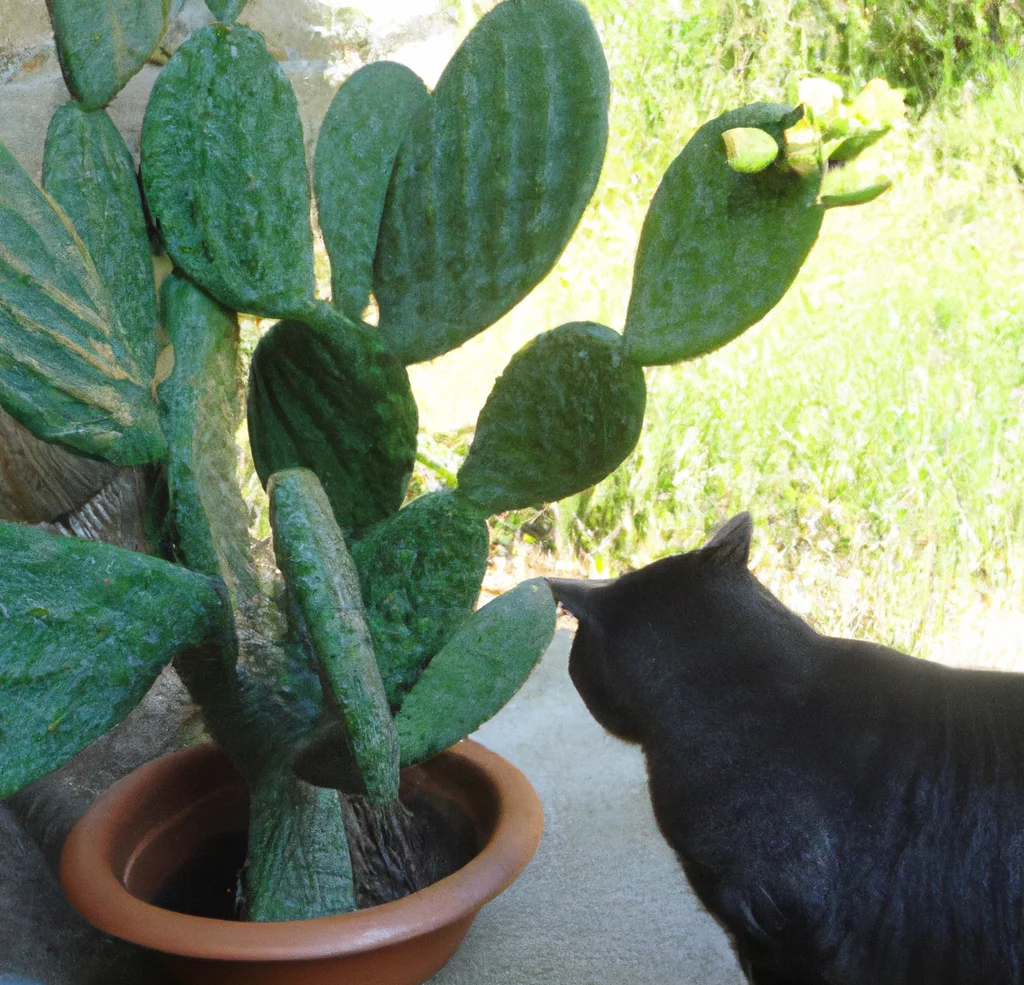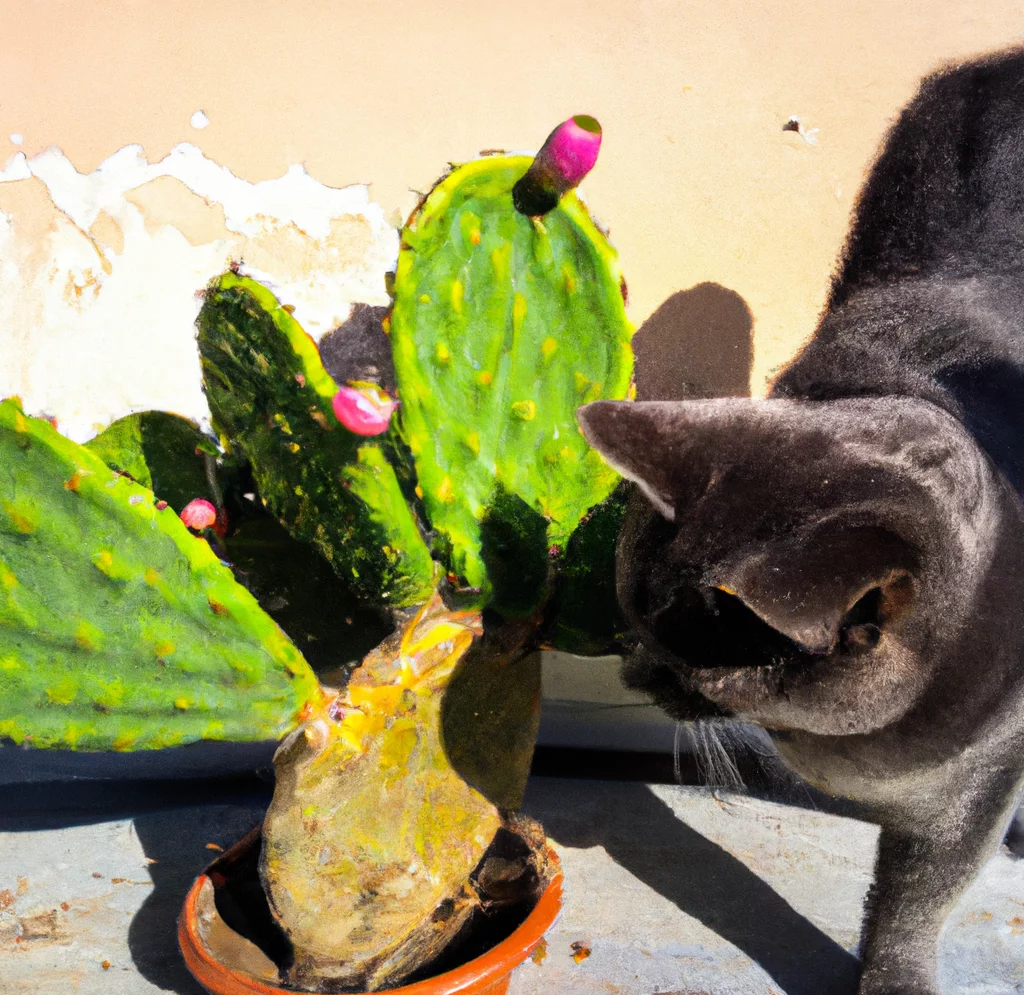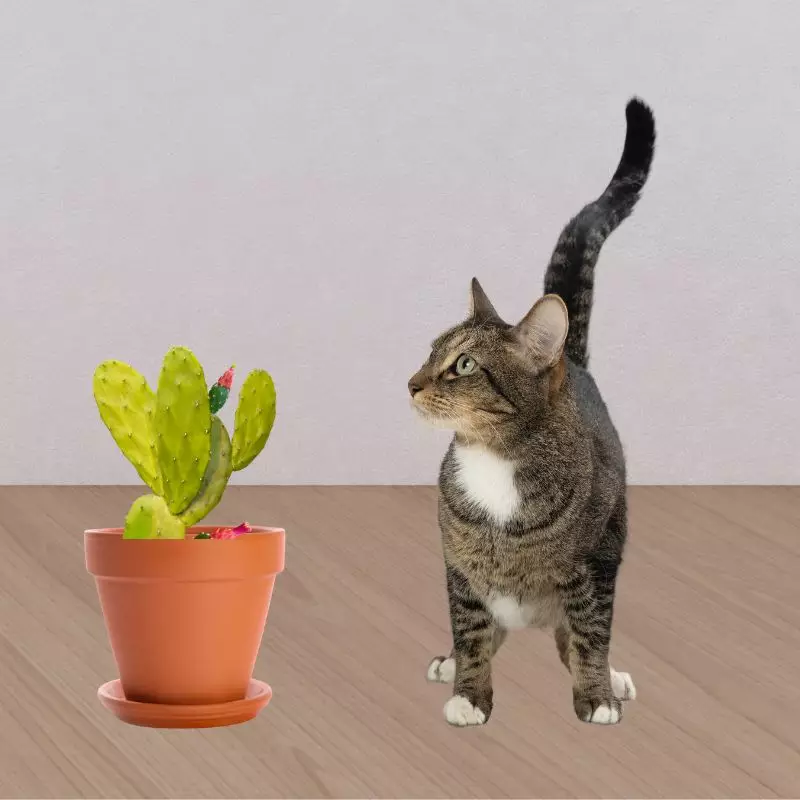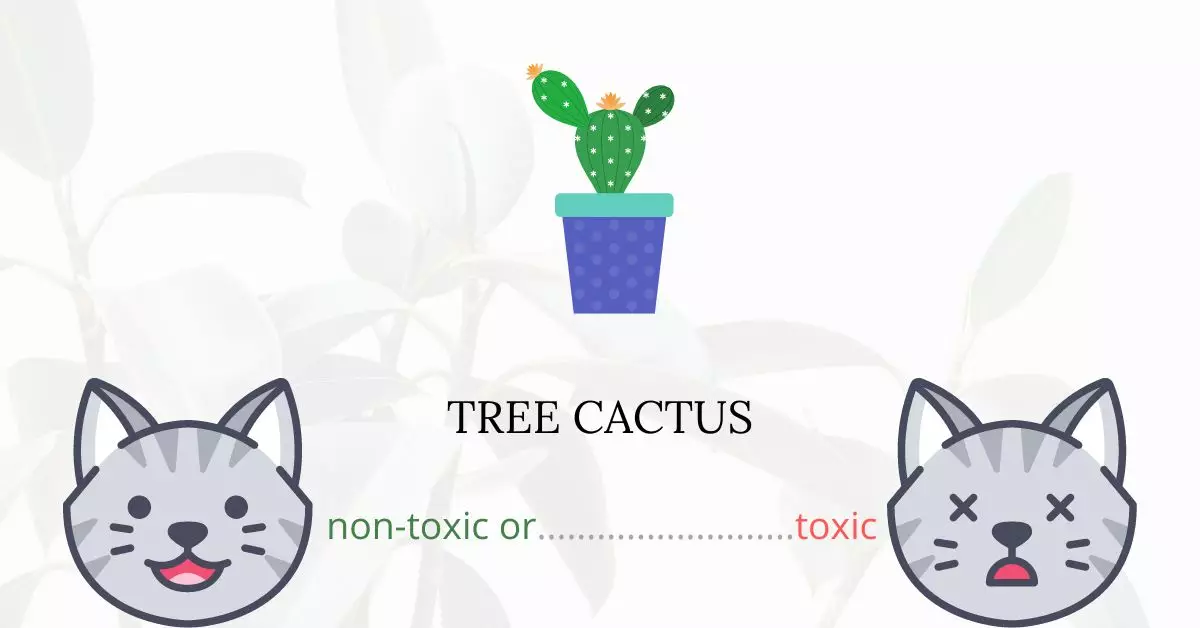No, the tree cactus or prickly pear is not toxic to cats.
This article is a result of close collaboration with a team of experienced DVMs (doctors of veterinary medicine). With their invaluable insights and our comprehensive research from high-authority sources such as the ASPCA and PetMD, we can confirm that the tree cactus is classified by the ASPCA (American Society for the Prevention of Cruelty to Animals) as a non-toxic plant for both cats and dogs.
While tree cacti don’t contain harmful substances, their prickly nature usually deters cats, making them an excellent and safe choice for a houseplant for pet owners.
Can Cats Eat Tree Cactus or Prickly Pear?

Because cats detest rough and prickly surfaces, they are most likely to avoid this plant. However, in case your curious feline companion has ingested a tiny portion of this plant, it should not be a major concern. Though, he may get injured because of the spines of the cacti. He may also experience vomiting and diarrhea.
Our feline companions are obligate carnivores, meaning they get all of their nutrition from meat. Their digestive system is not built to digest any plant material, including fruits and vegetables.
Though many commercial cat foods include fruits and vegetables in their ingredients and promote their health benefits, they only serve as a filler.
Cats, unlike omnivores and herbivores, cannot absorb the beneficial vitamins and nutrients found in plants, making plant material nutritionally insufficient for our felines. Though small amounts of nontoxic fruits and vegetables will not cause them any harm, there is no reason to offer them as a dietary supplement.
What is Tree Cactus or Prickly Pear?

Scientifically known as opuntia species, Tree Cactus contains over 100 species that are native to North and South America. They are erect or spreading cacti that range in height from low-growing shrubs to treelike plants reaching 16 feet or more.
Cladodes are flat paddle-shaped stem segments that grow one on top of the other in tree cacti. They all have spines in their areoles, but some have larger spines. The plant produces eye-catching flowers in yellow, pink, or orange hues. The fruits are usually fleshy, orange, and spiny, but can be dry at times.
Some tree cactus species are grown as houseplants. In Mexico, prickly pears are commonly used in food preparation such as appetizers, soups, desserts, and even beverages.
Keeping Cats Away From Tree Cactus or Prickly Pear

Using cages will prevent your cats from grazing on your cacti and other succulent plants. It will also protect both your cats and plants. You could use a cage to keep all of your succulents together. If not, you can use multiple cages to grow cacti in one cage, Echeverias in another, and so on.
You could also keep your houseplants in open terrariums or even closed terrariums. Doing this can method can also add aesthetics to your home. A permanent location for the terrarium must be set up if it is too large because moving them would be challenging.
Plants to Avoid For Your Cats
If you are a cat owner and unsure if the plants growing in your yard are harmful to your cats, check out this list of toxic plants for cats. You can also check our list of non-toxic plants for cats.





